The plants are still covered in dew as I wander early one Sunday morning through a stunning private garden in Mildura, discussing the city’s strong points and positive future.
I’m with chef and entrepreneur Stefano de Pieri, known for Stefano’s, his gourmet restaurant in the old cellars of the town’s Grand Hotel, his books and late-’90s television show A Gondola on the Murray.
Archaeologist Mark Grist, a Wergaia/Wamba Wamba and Nyeri Nyeri man, is also here and you could say his close friendship with Stefano is a metaphor for the modern cross-culturalism in this multicultural city on the Victorian side of the Murray River.
Stefano immigrated from Treviso in Italy to Melbourne in 1974, but he could have been born and bred here. In contrast, Mark has been based in this, his home town, after studying in Canberra and working nationally. Mark says their friendship is not so unexpected. He remembers going into the Grand Hotel years ago – still owned today by Stefano’s ex-father-in-law – and finding relatives working there at a time when many people wouldn’t employ Aboriginal people.
Stefano agrees Mildura has changed a lot since he moved here. “[Then] you wouldn’t have been able to buy, I don’t know, a Malaysian belacan,” he recalls. “Now there’s everything here.” This meeting of two friends from very different backgrounds is just one of the many pleasant surprises we encounter during a week in this thriving city, where we come across everything from avant-garde art and a Chinese flying school at Wentworth, to the “Garlic Man” basing his processing facility here.
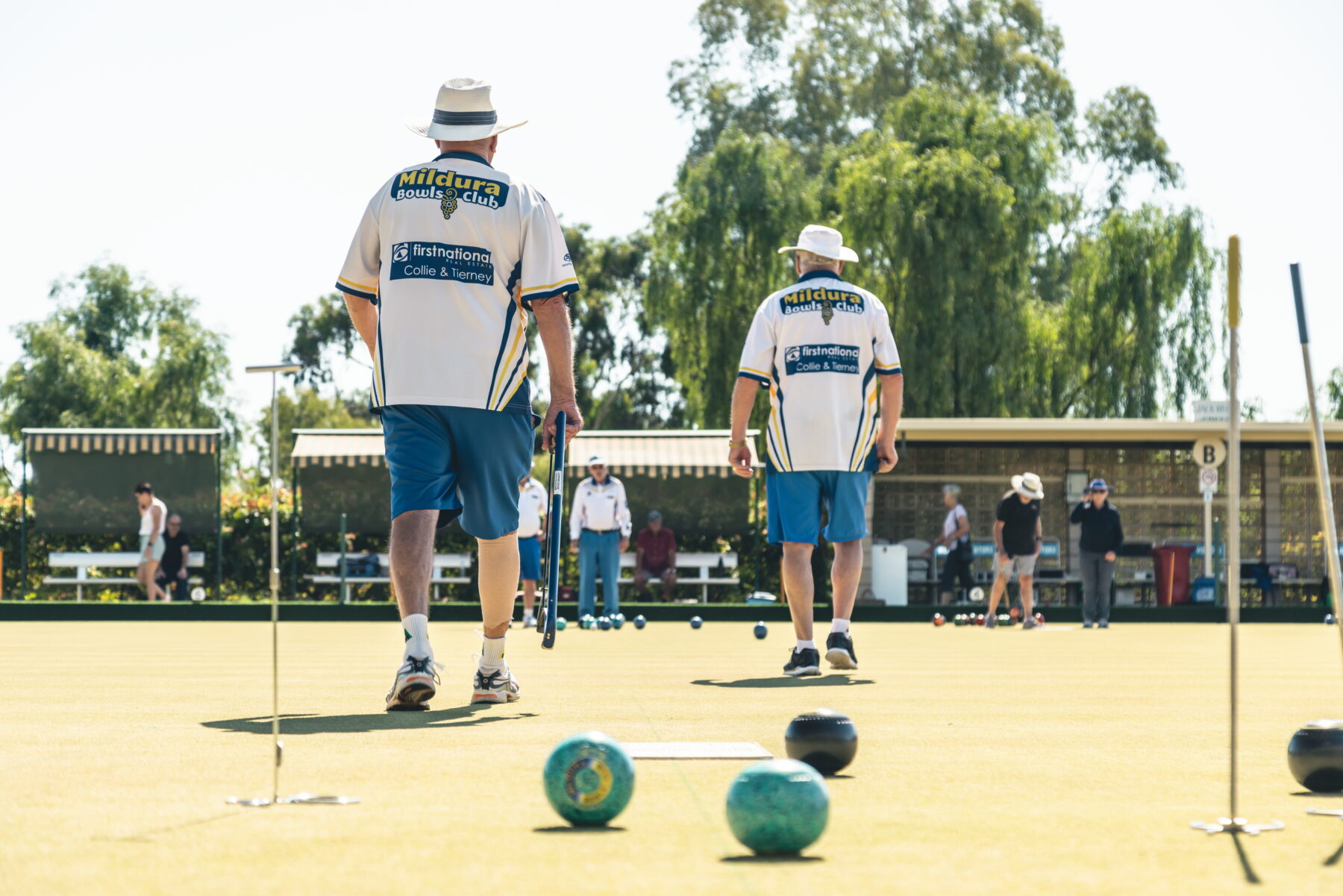
Mildura’s population of about 52,000 includes Irymple, Red Cliffs and Merbein in Victoria. But it’s also expanding into nearby Wentworth, Gol Gol and Buronga and continues to grow. Many, including professionals, are newly arrived, but others were born here and are now returning home.
Take a walk down to the Murray at dusk and there are people from every part of the world enjoying this lifeblood of the region. They include Traditional Owners, fishers, boat captains, rowers and those who just love to sit under a tree and observe the river’s many moods. In recent years there’s been a dramatic shift in the riverfront’s relationship with the city. While wide Deakin Avenue and the CBD were once cut off by the train line, now they’re connected to the river by steps, a walkway and lakes.
Further down on a big, sandy bend at Apex Park – home to the only inland life-saving club – locals and campers fish and swim as noisy ski boats zoom past.
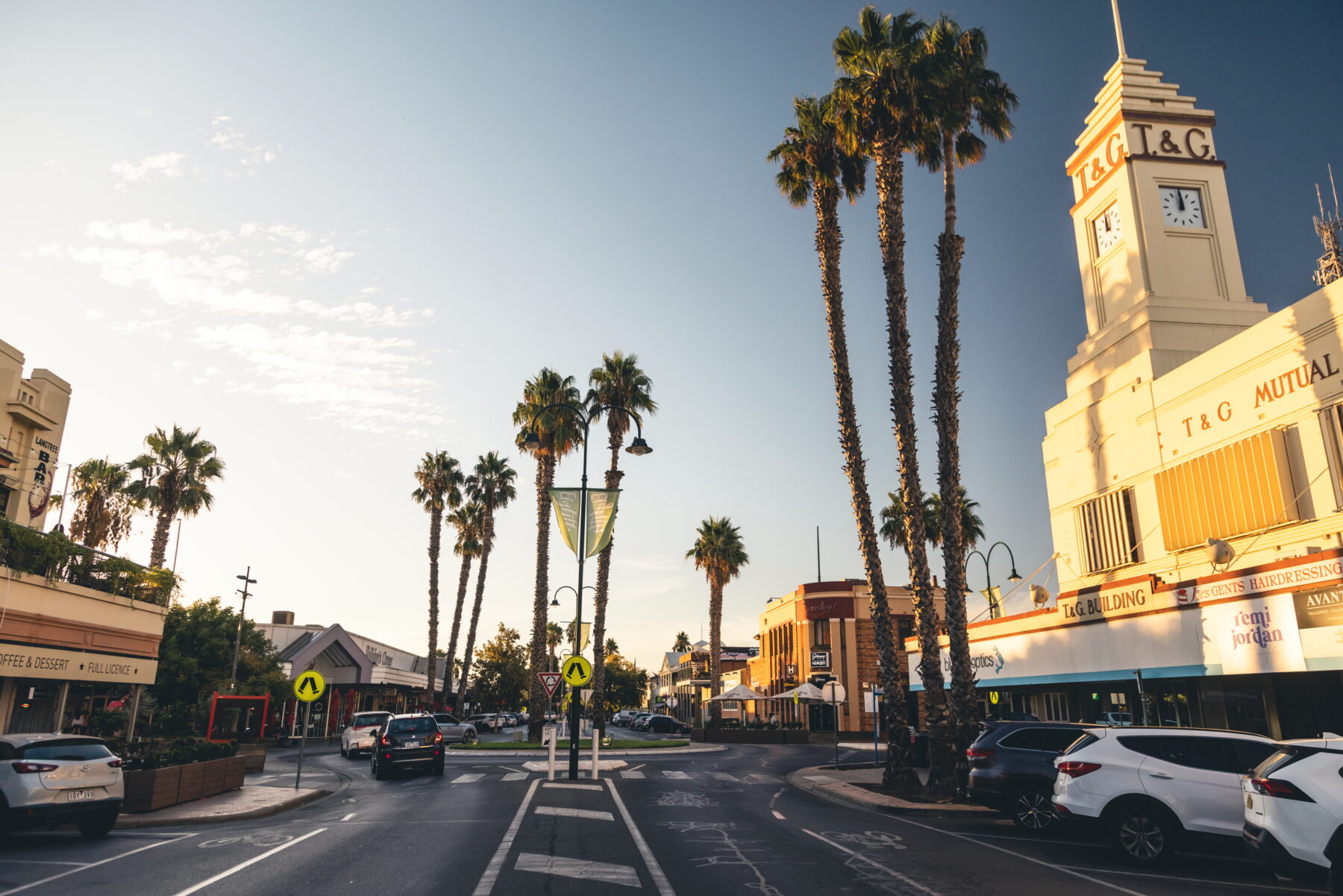
On the other side, at Gol Gol, opposite Nichols Point, Jane MacAllister, a Wentworth Shire councillor, was relieved when the huge 2022–23 floods didn’t destroy “her” river red gum clinging to a cliff, although many trees display flood markings.
“To see that river rising – it’s one of those supernatural forces,” she says, explaining that the people of Wentworth have historically built levees to stop the water reaching their town.
Jane grew up in Mildura but left for university. Whenever she returned she’d “get up on the rise and see that gorgeous river; it’s a powerful thing”. And she’d think, Ah, I’m home.
To Indigenous people such as Baakantji ranger Ricky Handy, who works out on the famed Neds Corner Station, 85km west of Mildura, the river is particularly significant. “It’s our lifeline and healing place,” he says. “And it’s for everyone to come and enjoy.”
From February 2024, Trust for Nature (TFN), a not-for-profit organisation, plans to pass the ownership of this 30,000ha conservation reserve to the First People of the Millewa Mallee Aboriginal Corporation that represents the Ngintait and the Latji Latji people and whose major role is to “heal Country”.

To get to Neds Corner, a once run-down station that borders Murray-Sunset National Park, we drive through the Millewa, a wheat and barley grain-growing region, and down to where the mallee almost reaches the river.
Dryland farming is gradually changing as best-practice farming methods improve farm productivity and sustainability; some farmers are working with grower groups such as Mallee Sustainable Farming (MSF).
We are met by Neds Corner manager Anthony (Bluey) Pay, Ricky, and fellow rangers Kyle Payne and David Williams, and take off to see the conservation work that has brought the station to life.
Anthony explains that since the first graziers arrived in the area from 1857, the cattle-and-sheep station was overstocked and “virtually eaten out”. But in 2002 TFN bought the property, and under its management, in collaboration with Traditional Owners, volunteers, donors and other supporters, the landscape has been transformed, its native vegetation restored.
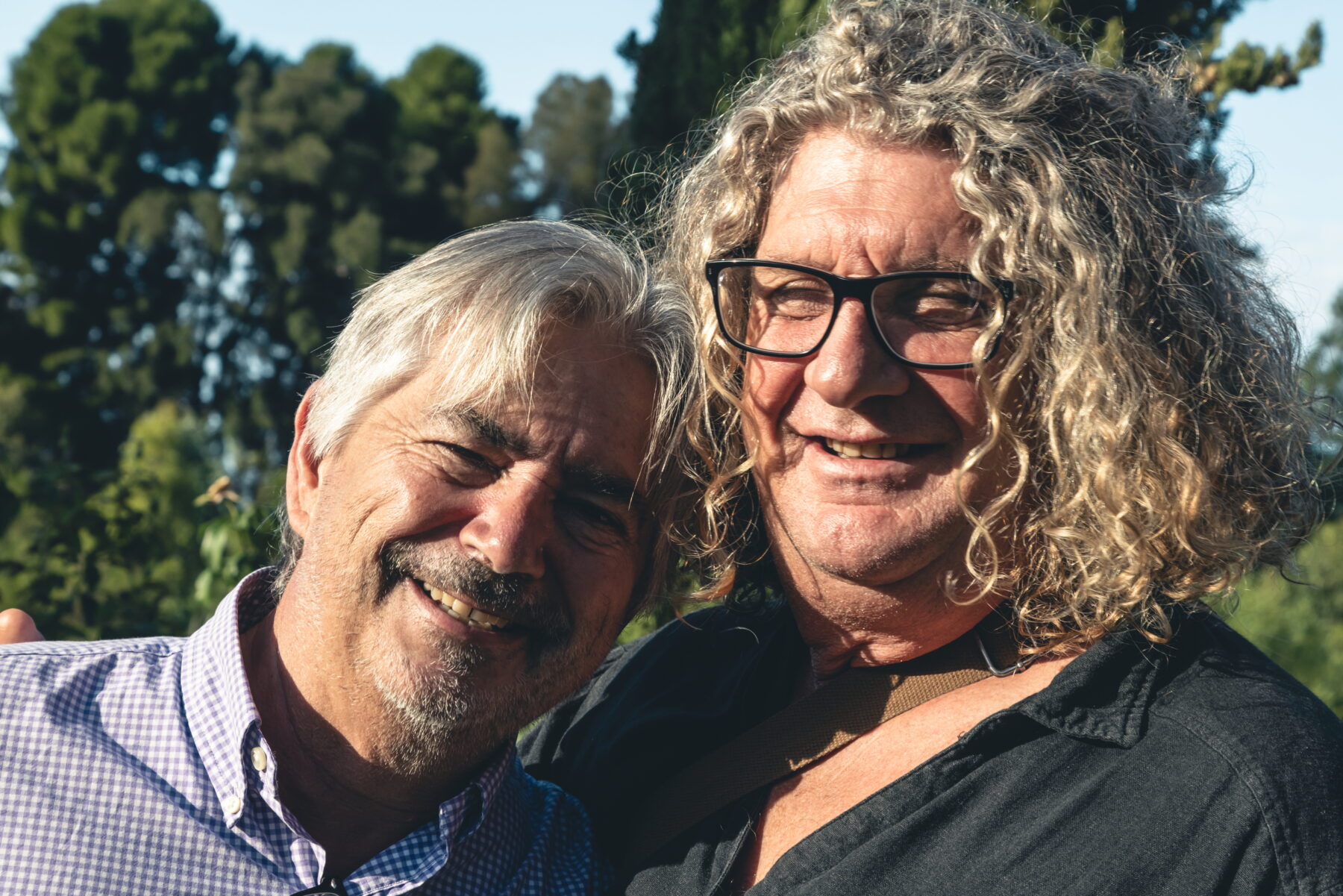
The river and its banks and nearby areas were rich food sources for First Nations people and the area is dotted with significant cultural sites – former burial grounds and middens, which TFN has been working at ways to protect.
We pull up at the Pine paddock, named for dead pine trees on a windswept sandhill. “This was just a sand-blown hill with nothing on it,” Anthony says.
Now bluebush, saltbush, black box trees and rare native orchids are thriving and emus, goannas and snakes are common. With the planting of thousands of trees and another 80,000 to go, Anthony describes what has happened here as “bloody awesome”.
The paddock is surrounded by 21km of fences electrified by solar panels to stop cats, foxes, rabbits and other feral animals from entering. Ricky shows me a spot on the exclusion fence where a rabbit has tried to dig its way in. He and the other rangers have sandbagged the spot.
The old homestead and shearers quarters have been restored and even the former shearing shed is put to good use, with its wool table used to sort seeds collected from the property.
“We want to keep the history here,” Anthony says.

A great deal of Mildura’s pioneering attitude today is due to its unusual history as a planned town back in the 1880s, when Canadian entrepreneurs the Chaffey Brothers (George and WB Chaffey) first took over the derelict Mildura sheep station to create a massive irrigation scheme.
Third-generation local, ceramic tiler, former Mildura Rural City Council mayor and present-day councillor Jason Modica walks us along the Chaffey Trail to the Arts Centre and Rio Vista, the former home of WB Chaffey.
“The original plan of the town was overlaid on the landscape,” Modica says. “It wasn’t like a mining town or frontier town. It was actually a model town.”
In 1884, after debilitating droughts, the Victorian government began investigating large-scale irrigation. On a trip to western USA in 1885, future prime minister Alfred Deakin met the Chaffey brothers, who’d created an “irrigation colony” on the Cucamonga Plains near Los Angeles. George Chaffey came here, explored the Murray River valley and in 1887, after protracted negotiation, purchased the then-defunct pastoral lease and created the Mildura Irrigation Colony, an area that would later become known as Sunraysia.
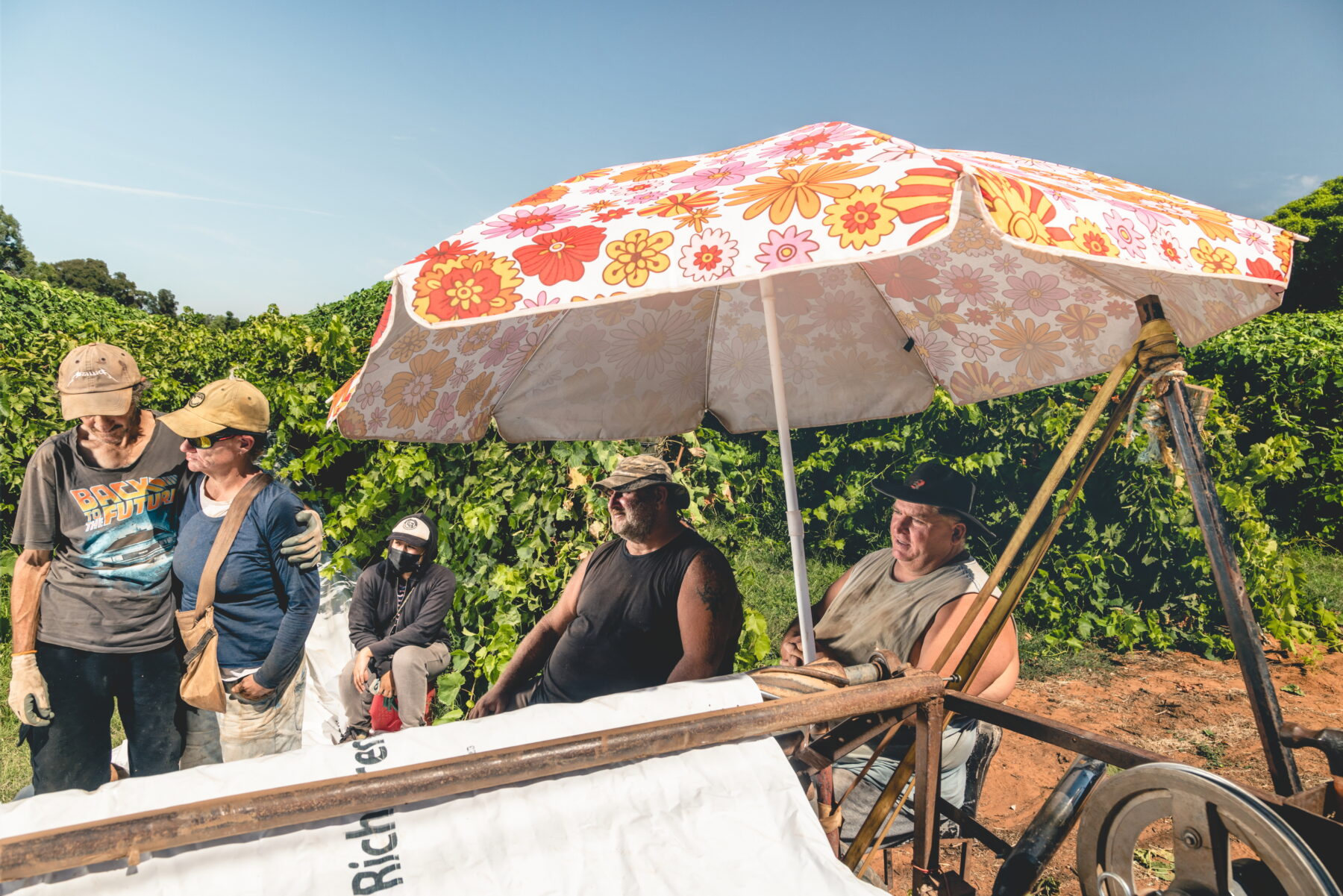
The Chaffeys adapted the town plan of Ontario for the present site of Mildura, and named streets in the American style of first, second and so forth. Visionaries, they developed a series of steam-driven pumps to lift water from the Murray, and their plans included an agricultural college. But, as believers in temperance, they only allowed two pub licences, which led to locals opening their own clubs.
However, dreams were shattered when the area was hit with drought, the Depression and financial woes. Labelled “Yankee water thieves” after going into liquidation and the banks foreclosing on hundreds of local farmers, the Chaffeys had to face a royal commission into the failed colony.
Eventually George Chaffey returned to the USA but WB stayed in Mildura, becoming mayor in 1920 and, as times improved, helping the Sunraysia district become the “fruit basket of Australia”, producing table grapes, dried fruit and citrus. Later, almonds and pistachios were planted.
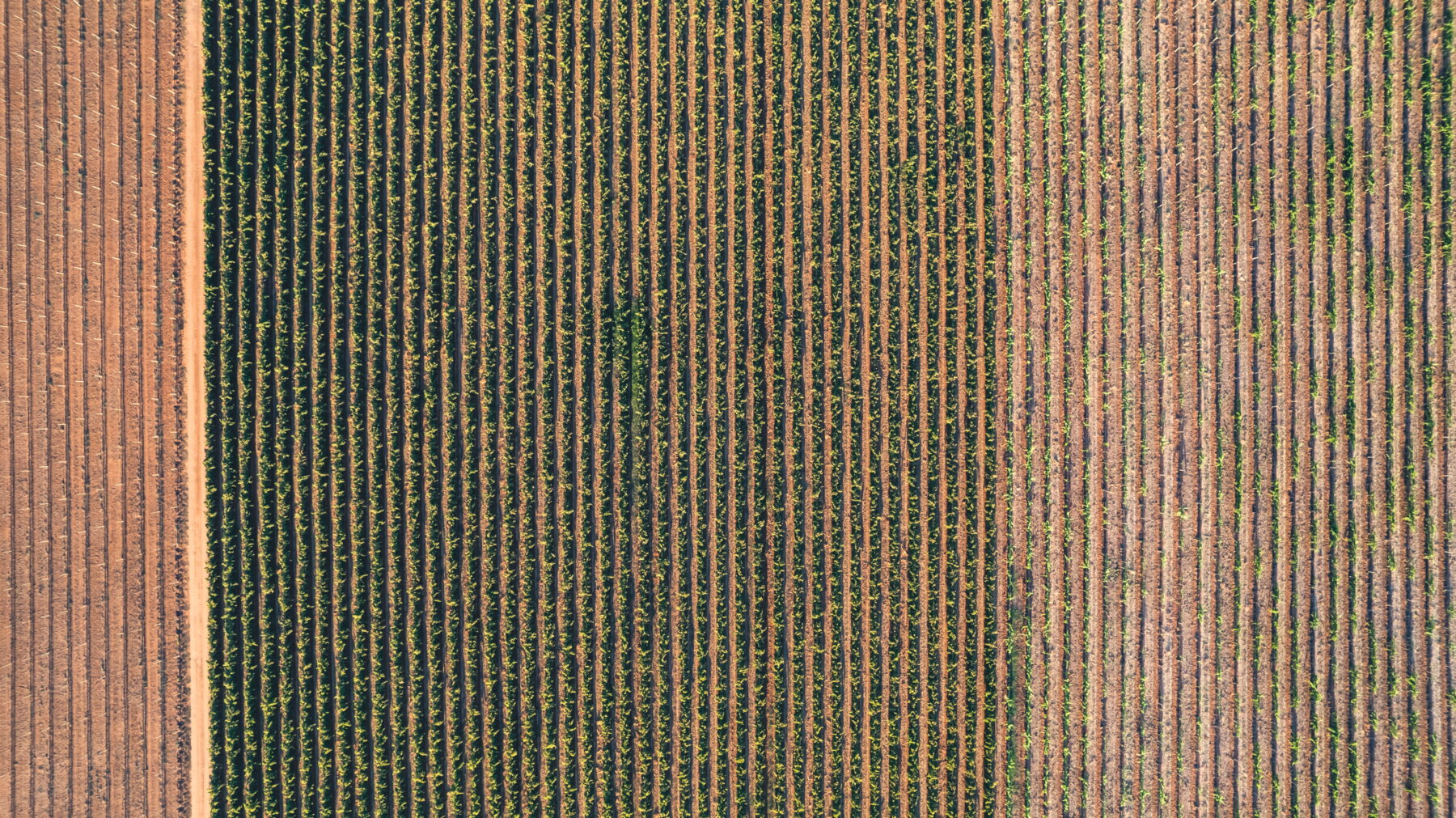
Under the soldier settler scheme, many returned World War I servicemen took up land here, followed by Greeks and Italians after World War II and Turks in the 1970s. Refugees from Vietnam, Afghanistan, Burma and other countries followed.
Although the Chaffeys’ legacy is not quite the agrarian socialist society the brothers envisaged, Mildura’s reputation for self-reliance and innovation, as well as for being a caring community, lives on. Philanthropy, civic engagement and volunteerism are strong, and as one regular visitor told us, there’s an “oh well, we’ll do it ourselves” attitude.
Its second biggest industry after agriculture is social services. For a long time housing was cheap, attracting a fairly significant welfare component, and organisations servicing that sector.
For example, the Christie Centre is addressing the lack of employment for people with a disability by creating accessible work opportunities for people of all abilities in the region, mainly at its flagship business, the Mildura Chocolate Company.

After COVID, many people moved here for the lifestyle, affordable real estate and good schools. Medical specialists are now living here and servicing Melbourne, reversing the usual tradition. But nurses are needed, as are tradespeople, teachers and front-of-house staff and sommeliers for the more-upmarket restaurants. There’s a need for a new hospital, although in the meantime a cancer treatment centre is being built.
Locals say they would welcome the return of a passenger train to Melbourne, six hours drive away. (The Sturt Highway connects Sydney and Adelaide.)
Jason Modica reminisces that life for his grandparents on both sides was hard, but good. His Anglo grandfather first picked grapes here in 1932, while his Italian grandfather came for the temperate environment and the water, purchasing land at Gol Gol in 1934. But agriculture has changed enormously. He describes the city today as a “corporate town” run by the big businesses that own the “very thirsty” almond, dried fruit and fresh fruit farms, most of which rely on mechanisation. The rapid growth of the past
15 years has also led to new housing developments, particularly in Mildura and its satellite towns, as well as Gol Gol and Buronga.
“There was an option to come here and be a farmer and have a subsistence life and make some money,” Jason says. “That doesn’t exist anymore.” And with the pressure of today’s water economy, he laments, “people making the decisions don’t understand that the river needs to be healthy”.
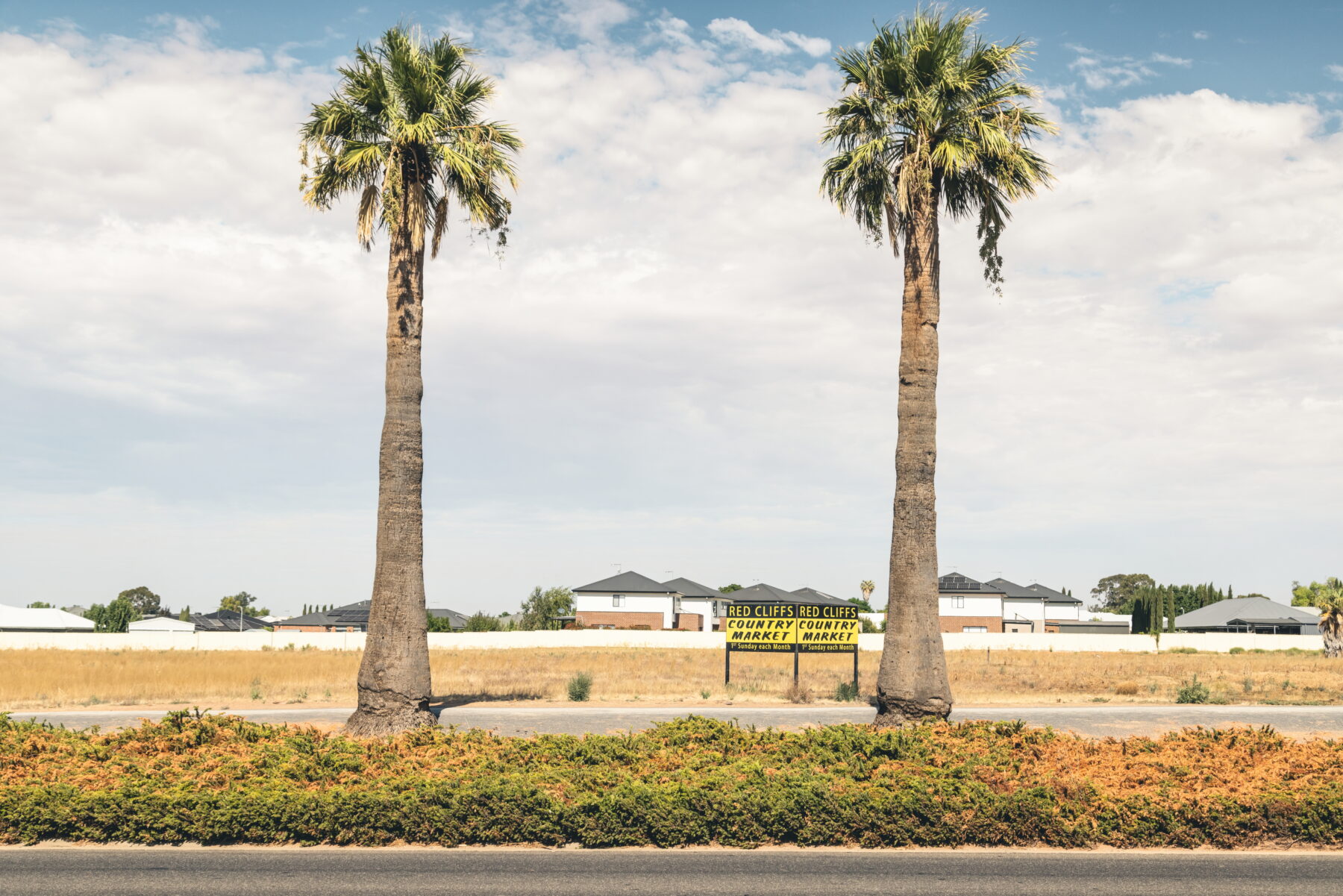
Driving out of town we come across a group of people rolling covers off sultana vines in the hot sun. They include farmer Peter Sandler, who explains the covers are erected to protect the grapes from burning. He bought into his farm at Red Cliffs 15 years ago but does this extra work to supplement his income. It pays “150, 160 bucks an acre, roughly”.
Due to the 2022–23 floods and disease, many farmers lost 40 to 60 per cent of their crops. “With rising expenses and everything else, you’ve got to basically find something else to plug the hole,” Peter says.
He complains that the big farms are “forcing all the little blokes out” while local grape growers have been hit hard by recent trade wars with China. Paying for water is very complicated, and expensive too.
“Farming’s no longer straightforward,” Peter says. “There are seven chemicals you need a licence for. You’ve got to be a computer whiz.”
Still, local innovators are also changing the scene. The names of two inspirational couples pop up wherever we go: Jenni and Bruce Chalmers, of Chalmers Wines, and Duncan and Jan Thomson. In 1983 the Thomsons founded SunSalt, which produces salt from the underground saline water at Hattah in north-western Victoria. They then established Murray River Salt in 2000.
Murray River Salt produces Australia’s only natural pink salt, premium gourmet salt flakes created from the brine of the Mourquong Salt Mitigation Basin in New South Wales, 13km north-west of Mildura. The company taps into this natural resource and converts it into a value-added gourmet food product, while protecting the environment from the effects of salinity.
We are at Mourquong, and Melissa Tucker, operations supervisor at Murray River Salt, explains that this site is part of the Salt Interception Scheme, an engineering tool used to divert groundwater away from the river system into evaporation basins. “By harvesting the salt here, we are preventing approximately 200 tonnes per day of salt [saline water] entering the Murray River,” Melissa says.
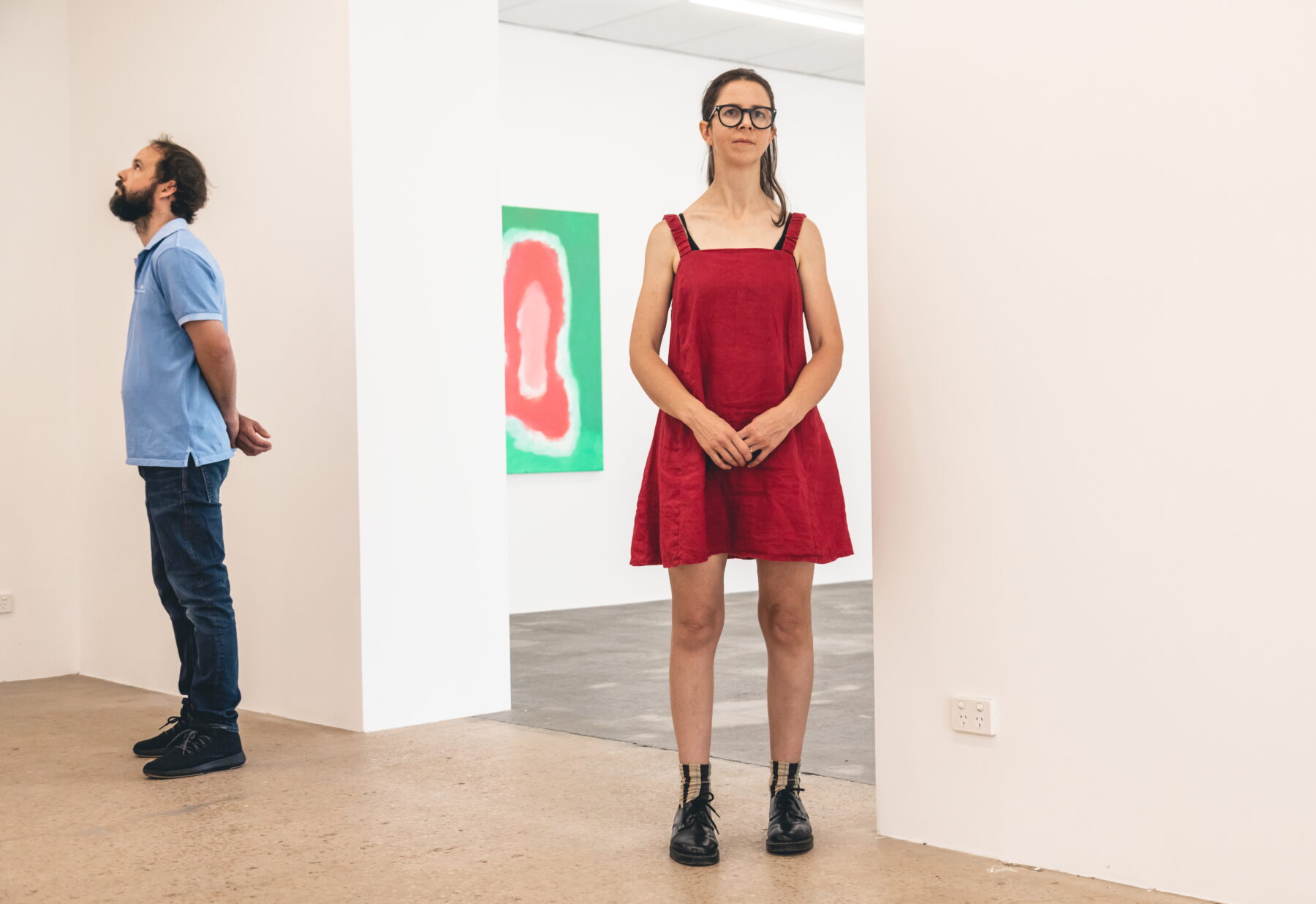
Before showing us around Chalmers Wines at Merbein, Kim Chalmers, a trained classical composer, explains she and her sister, Tennille, are partners in the wine business and the original nursery, while her Dutch husband, Bart van Olphen, is the winemaker. Her parents, Bruce and Jenni, who are still involved, were broadacre wheat and sheep farmers between Euston and Balranald in NSW when they started a nursery, grafting and propagating vines and selling them to grape growers. They gradually began to specialise in Italian varieties. “They had a grand vision that this diversity would change viticulture in Australia, and it has – but it’s taken 25 years to do it,” Kim says.
Then in 2004 they started making their own wine, “making sure we chose varieties that had nice high natural acidity, required less water, handled the heat better and needed fewer chemicals”. They were pushing against a commercial idea that cool climate is good and warm climate is bad in wine. Their techniques for warm climate wine are now critical information for other vineyards looking at ways to manage climate change. Now they grow 50 different varieties that produce more elegant, fresher wines to suit our Australian lifestyle. And they sell premium hand-picked grapes from this vineyard to 30 different winemakers across the country.
“Our approach is healthy soil, healthy environment, balanced vines,” Kim says. “We’re minimising our impact by reducing our irrigation significantly – about 35 per cent less than the rest of the district on average. Sustainability is also supporting your social ecosystem. We’ve got a really great multicultural workforce of people, and we’ve got a great work culture here.” Since 1999, when the annual November Australian Alternative Varieties Wine Show began, Mildura has become a capital of alternative varieties. “We love the region, we’re very proud of Mildura,” Kim says.
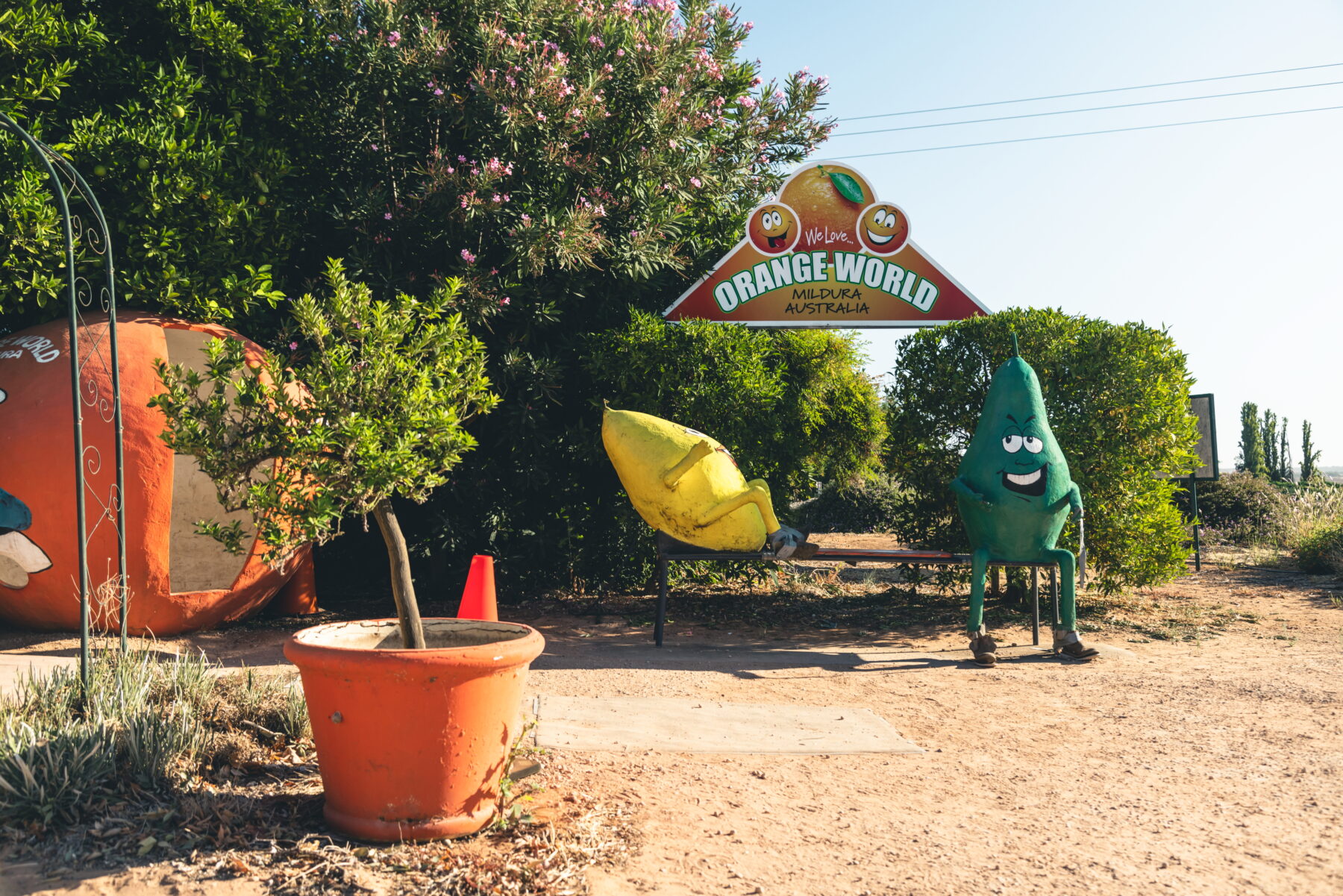
One such international winemaker, Marco Sollazzo, is making us a cuppa in his kitchen in Mildura and explaining how he came to move here, all the way from his home town of Rome.
Marco, 34, has a masters in viticulture and winemaking and a bachelor degree in food technology from Italy. Wanting to improve his English, he studied in Dublin for four months before applying for jobs in Australia and New Zealand. He was offered a three-month position here with Zilzie Wines and extended for six months in 2015.
Marco returned to Italy after the first vintage in Australia but came back to Zilzie under a sponsorship scheme in 2016 because of better working conditions. Now an Australian citizen, he has created social connections with a few international winemakers working for nearby wineries, his Australian family – Candy, Krister and Karl – and some special people who spend time and effort showing him around Mildura. “We generally spend our time sharing our food culture and traditions at each other’s homes,” he says. “We love to sit behind a glass of wine or a beer.”

While we’re here it’s vintage time – usually between January and April – and workdays are long. “In vintage, I work six days per week…and then generally 11–12 hours per day,” Marco says. “I look after a few varieties such as prosecco, pinot grigio, shiraz, cabernet, merlot and organic wines.”
He describes Mildura as “dynamic” and an easy, more-affordable place to live than the big cities. But you need to be proactive and join groups and clubs. He’s in a running group. “It’s nice because you have the riverfront not far away,” Marco says. “Everything is reachable within 10 to 15 minutes. I like it; there is not as much traffic as Rome and other big cities.”
At the “best coffee in town” at Steampunk, owner and chef chef Silvano D’Alessandro is chatting to us from behind his machine. He prides himself on knowing the names and preferred order of some 360 people who come here regularly. “You’re not a customer here; you’re a guest,” he says. Silvano grew up in Red Cliffs, went to Melbourne for 20 years and ran a restaurant in South Yarra. So, the “very Brunswick” influence is strong. He also cooks about 14 private “secret” dinners a year for 12 of “your closest friends”. Yet Silvano still feels Mildura has a long way to go in terms of dining variety and entertainment, and is turning his eyes to Singapore as his next endeavour.
Les Murray’s ode to Mildura as a “rose-red city”, “Oasis City”, is displayed on a wall at Stefano’s Cafe. The at-times controversial poet was the patron of the annual Mildura Writers Festival, which is still, Stefano de Pieri says, “very, very intimate”.
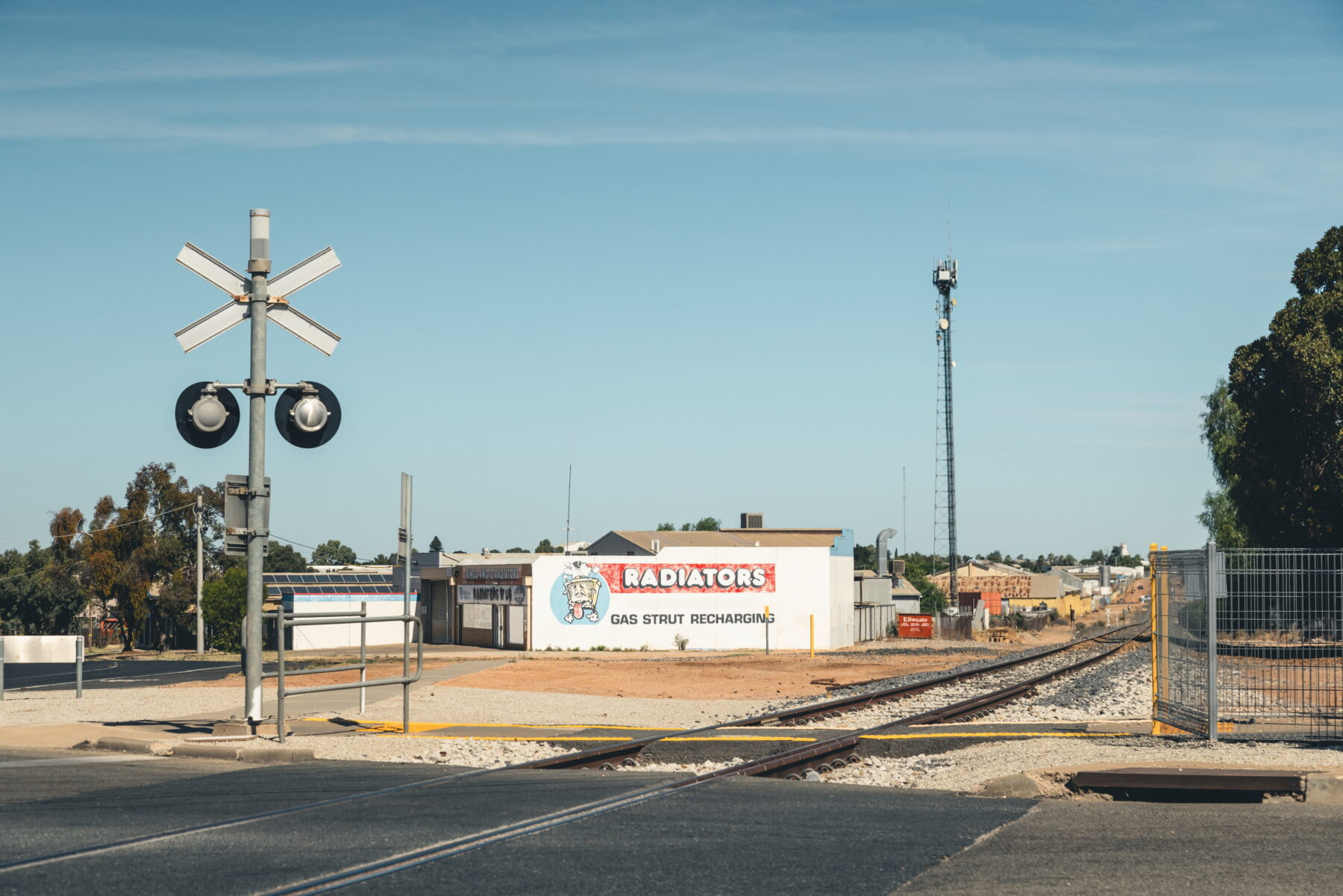
The city has several festivals, including a country music one. Its Sculpture Triennials, which took place between 1961 and 1988, inspired the many sculpture festivals we have today.
Stefano’s Cafe, which is now owned by Ryan Casey, often provides the food at opening nights at new art gallery NAP Contemporary, while Chalmers Wine is served. Anthropologist Erica Tarquinio and her partner, Riley Davison, who managed a community owned Indigenous arts centre in Central Australia, are the gallery owners and moved here two years ago. They mounted this project shortly after Riley’s parents’ former VW dealership showroom was made available to them.
“There was a great response from the artists and the city, who understand a new art gallery is good for the community,” Erica says. “Some of the art is challenging, but it’s always a good talking point.
“The greatest thing about Mildura is you get a little bit of everything. It’s a bubble, but it also has diversity.”
As Stefano tells me during our garden walk: “There is always something curious happening in this place.”
